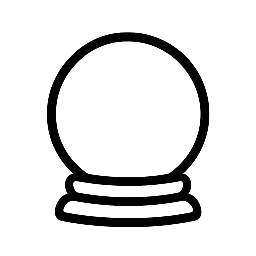Reiki 101: Unlocking the Secrets of Energy Healing
In a world where traditional medicine often focuses on treating symptoms rather than addressing the underlying causes of illness, energy healing modalities like Reiki have gained popularity for their holistic approach to wellness. Reiki, a Japanese technique developed in the early 20th century, has been practiced for decades to promote relaxation, balance, and healing. In this article, we’ll delve into the basics of Reiki, exploring its history, principles, and benefits, as well as providing a comprehensive introduction to this powerful energy healing practice.
What is Reiki?
Reiki is a form of energy healing that involves the transfer of universal life force energy from the practitioner’s hands to the client’s body. The word “Reiki” is derived from two Japanese words: “Rei,” meaning universal, and “Ki,” meaning life energy. This energy is believed to be an intelligent, pulsing force that flows through all living things, and Reiki practitioners are trained to tap into and channel this energy to promote healing and balance.
The History of Reiki
Reiki was developed by Mikao Usui, a Japanese Buddhist monk, in the early 1900s. Usui spent years studying meditation, astrology, and spiritual healing, eventually developing a system of hand positions and techniques that would become the foundation of Reiki. After a 21-day meditation on Mount Kurama, Usui received a spiritual awakening, which allowed him to access and channel the universal life force energy. He spent the rest of his life teaching Reiki to others, and his legacy has spread globally, with millions of practitioners now using this modality to heal and balance the body, mind, and spirit.
The Principles of Reiki
Reiki is based on five key principles, which are:
- Just for today, I will let go of anger: Reiki promotes the release of negative emotions, such as anger, to create a peaceful and calming environment for healing.
- Just for today, I will let go of worry: By letting go of worry, Reiki practitioners and clients can focus on the present moment, allowing for a deeper connection to the universal life force energy.
- Just for today, I will be grateful: Gratitude is a powerful energy that can shift our perspective and attract positive experiences into our lives.
- Just for today, I will do my work honestly: Honesty and integrity are essential components of the Reiki practice, promoting a sense of trust and respect between practitioner and client.
- Just for today, I will be kind to all living things: This principle embodies the compassionate and loving nature of Reiki, encouraging practitioners to treat all beings with kindness and respect.
How Reiki Works
Reiki works by channeling the universal life force energy through the practitioner’s hands, which are placed on or above specific positions on the client’s body. This energy is believed to flow into the client’s body, restoring balance, harmony, and vitality. Reiki can be used to treat a wide range of conditions, including stress, anxiety, pain, and fatigue, as well as promoting overall wellness and relaxation.
Benefits of Reiki
The benefits of Reiki are numerous and well-documented. Some of the most significant advantages of this energy healing modality include:
- Reduced stress and anxiety: Reiki has been shown to lower cortisol levels, heart rate, and blood pressure, promoting a sense of calm and relaxation.
- Improved sleep: Regular Reiki sessions can help regulate sleep patterns, leading to improved rest and recovery.
- Pain relief: Reiki has been used to treat chronic pain, inflammation, and migraines, with many clients reporting significant reductions in pain levels.
- Enhanced immune function: Reiki has been shown to boost the immune system, reducing the risk of illness and infection.
- Increased feelings of calm and well-being: Reiki promotes a sense of balance and harmony, leading to increased feelings of joy, happiness, and overall well-being.
Getting Started with Reiki
If you’re interested in exploring Reiki, there are several ways to get started:
- Find a qualified Reiki practitioner: Look for a licensed therapist or certified Reiki practitioner in your area, and schedule a session to experience the benefits of Reiki firsthand.
- Take a Reiki class: Learn the basics of Reiki and become a practitioner yourself by taking a class or workshop.
- Practice self-Reiki: You can also practice Reiki on yourself, using simple techniques and hand positions to promote relaxation and balance.
Conclusion
Reiki is a powerful energy healing modality that offers a holistic approach to wellness, promoting relaxation, balance, and healing. By understanding the history, principles, and benefits of Reiki, you can unlock the secrets of this ancient practice and experience the profound effects of universal life force energy for yourself. Whether you’re seeking to reduce stress, alleviate pain, or simply promote overall well-being, Reiki is a natural, non-invasive, and effective way to achieve optimal health and happiness.


Leave a Reply